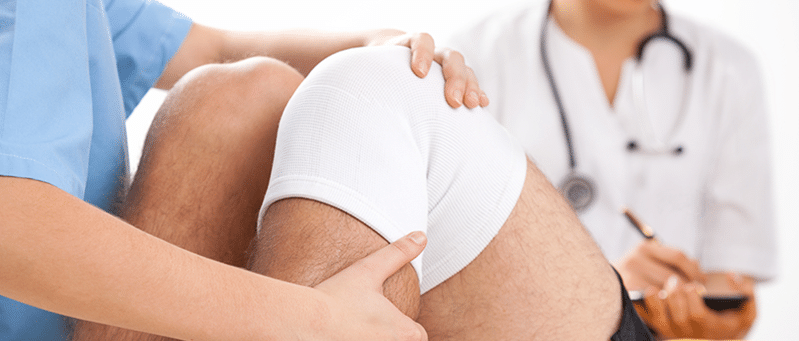Musculoskeletal injuries and conditions, such as those related to the knee and Achilles tendon, are frequently encountered issues that can affect one’s ability to move and their overall quality of life. Identifying the initial symptoms and seeking diagnosis and treatment are then essential to properly address these issues.
Discover arthritis in the knee, Achilles tendon pain, and ACL injuries in detail, emphasising their early indicators, methods for diagnosis, and the treatment alternatives provided by knee specialists in Singapore.
Arthritis in the Knee
Early Signs of Arthritis in the Knee
Arthritis in the knee is a common condition that can lead to discomfort and impaired mobility. Early signs include:
- Pain and Stiffness: Initial pain after periods of inactivity, such as after waking up or sitting for long durations. Stiffness and reduced flexibility in the knee joint are typical.
- Swelling and Tenderness: The knee may appear swollen, feel warm to the touch, and be tender.
- Reduced Range of Motion: Difficulty in bending or straightening the knee fully can be an early indication of arthritis.
- Grinding Sensation: A grating or grinding sensation within the knee joint when moving.
Diagnosing Arthritis in the Knee
Diagnosis involves a combination of physical examinations and imaging tests:
- Physical Examination: A specialist will check for knee swelling, tenderness, range of motion, and stability.
- Imaging Tests: X-rays can reveal bone changes and cartilage loss, while MRIs provide images of soft tissues, including knee cartilage.
- Lab Tests: Blood tests may be conducted to rule out other conditions, and joint fluid analysis can help identify the type of arthritis.

Treatment Options for Arthritis in the Knee
Treatment focuses on managing symptoms and enhancing joint function:
- Medications: Nonsteroidal anti-inflammatory drugs (NSAIDs) and corticosteroids can reduce inflammation and pain.
- Physical Therapy: Exercises to strengthen the muscles around the knee can enhance stability and function.
- Lifestyle Changes: Weight management and low-impact activities such as swimming and cycling.
- Surgical Options: Arthroscopy, osteotomy, and knee replacement surgery are recommended for severe cases.
Achilles Tendon Ache
Early Signs of Achilles Tendon Ache
Achilles tendon ache is often experienced by athletes and active individuals. Early signs include:
- Pain and Stiffness: Pain typically occurs at the back of the ankle and can be noticeable in the morning or after activity.
- Swelling and Tenderness: Swelling around the Achilles tendon and tenderness when touched.
- Limited Flexibility: Difficulty flexing the foot or standing on tiptoe.
- Thickening of the Tendon: The tendon may feel thicker than usual.
Diagnosing Achilles Tendon Ache
Diagnosis methods include:
- Physical Examination: Checking for pain, swelling, and range of motion in the ankle.
- Imaging Tests: Ultrasound and MRI can assess the condition of the tendon and detect tears or degeneration.
Treatment Options for Achilles Tendon Ache
Treatment aims to alleviate pain and restore function:
- Rest and Ice: Resting the affected leg and applying ice can reduce pain and swelling.
- Medications: NSAIDs can help manage pain and inflammation.
- Physical Therapy: Stretching and strengthening exercises tailored to the Achilles tendon.
- Orthotics: Heel lifts or custom orthotics to reduce strain on the tendon.
- Surgical Intervention: Surgical repair may be necessary in severe or persistent pain.
ACL Injuries
Early Signs of ACL Injuries
ACL injuries are common in sports involving sudden stops and changes in direction. Early signs include:
- Popping Sensation: A popping sound or feeling in the knee at the time of injury.
- Severe Pain: Immediate and intense pain following the injury.
- Swelling: Rapid swelling within the first few hours.
- Instability: Feeling instability or the knee “giving way” during movement.
Diagnosing ACL Injuries
Diagnosis involves:
- Physical Examination: A knee specialist will perform tests to assess the stability of the knee ligaments.
- Imaging Tests: MRI is commonly used to confirm ACL tears and evaluate the extent of the injury.
Treatment Options for ACL Injuries
Treatment depends on the severity of the injury and the patient’s activity level:
- Rest and Rehabilitation: Initial treatment involves rest, ice, compression, and elevation (RICE), followed by physical therapy to restore function.
- Bracing: Knee braces may be used to stabilise the knee.
- Surgical Reconstruction: ACL reconstruction surgery involves replacing the torn ligament with a graft, typically from the patient’s or a donor’s tissue.
Conclusion
A proper grasp of the initial symptoms, diagnostic techniques, and treatment choices for knee arthritis, Achilles tendon pain, and ACL injuries is necessary to manage and recover from these conditions. Seeking advice from a specialist in knee issues can also offer personalised treatment strategies and ideal care alternatives.
Visit Auspicium Orthopaedic Centre and let us help you regain mobility and comfort.





